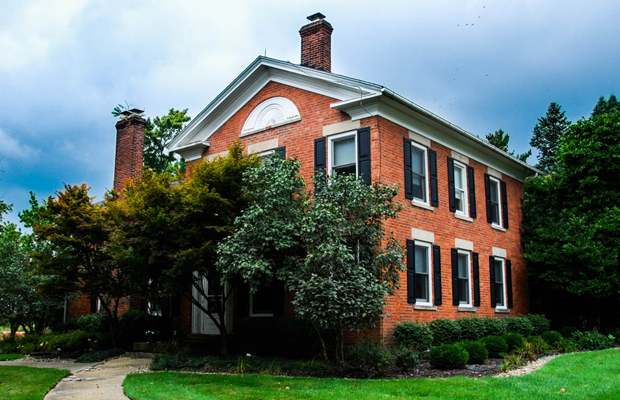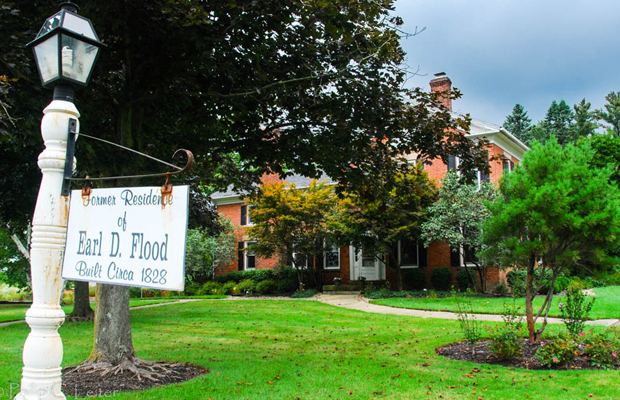Thurs, Nov 13, 7:00pm at Barlow Community Center. Dr. Megan Shaeffer discusses the history and archaeology of Wood Hollow Metro Park
Ellsworth-Kilbourn House


The two-story, Federal-detailed, brick building has a shallow roof pitch with brick balustrade, front doorway with sidelights, elliptical fanlights over the doorway and attic and window sills and lintels of sandstone. Photographs from as early as 1850 show a large side wing and Greek Revival roof pitch. The brick was believed to have been made at the Case Farm on Barlow Road, “as the soil rendered the supply of brick inexhaustible and cheap.”
George Kilbourn was encouraged by David Hudson to move to the Western Reserve along with his wife and 5-year-old son, Asahel. He brought books, setting up the first library, had a strong religious morality, and political aspirations being one of the first voters. He was elected Supervisor of Highways.
By the time Asahel was 25, he owned a dry goods store, farm and tannery. He was deeded this property in 1828 from John Ellsworth, who had a frame house on the site at the time. Asahel was a justice of the peace, deacon of the First Congregational Church, and treasurer of the Western Reserve Branch of the American Education Society. He was also a Reformer, taking active roles in anti-slavery and temperance. Asahel and his wife, Sophronia, had nine children. In 1856, Sylvester Thompson, son of Hudson’s first doctor, Moses Thompson, purchased the property and remodeled the home. Sylvester was also anti-slavery and temperance. His son, Sherman Thompson, lived in the house until 1909 with his wife, Cordelia, and their son, Fredrick Thompson, who owned the house until 1921. It then passed into receivership to the Cuyahoga Falls Sanatorium. In 1948, Earl Flood purchased the house and 45 adjoining acres, forming the Flood company.